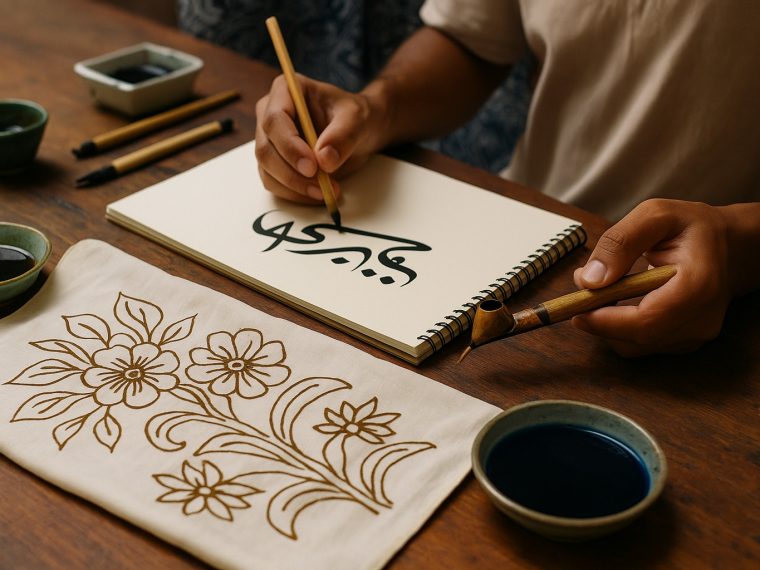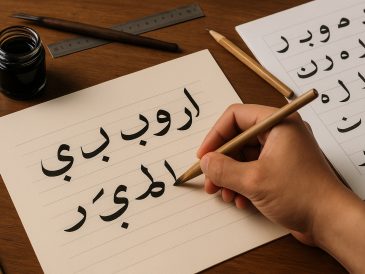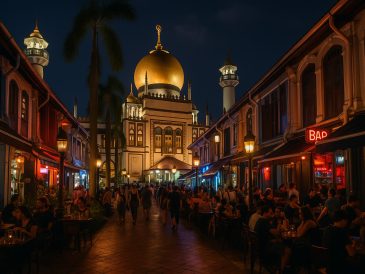Kampong Gelam doesn’t just display culture—it invites you to make it. Calligraphy and batik workshops give locals and travelers the rare opportunity to work with age-old tools, natural dyes, and time-honored techniques passed through generations. This isn’t a photo-op. It’s hands-on tradition you’ll carry home.
Why These Workshops Matter
Both calligraphy and batik are deeply rooted in Southeast Asian and Islamic traditions. They’re more than art—they’re expressions of identity, faith, and memory. Joining a workshop doesn’t just mean learning a technique; it means stepping into a lineage.
Workshops in Kampong Gelam often take place in restored shophouses or art studios that reflect the neighborhood’s hybrid past: Malay, Arab, Bugis, and Javanese influences living in the same sentence.
What to Expect at a Calligraphy Workshop
Islamic calligraphy, especially Jawi script, is both precise and poetic. Instructors usually start with a short cultural briefing before you touch the ink. Then it’s straight into form.
What you’ll learn:
- How to hold and angle the qalam (reed pen)
- Basic strokes and letterforms of Arabic or Jawi script
- Structure and rhythm of classical compositions
- How ink density and pressure shape emotion in each line
Workshops often conclude with you writing a name, prayer, or quote to bring home, framed or scroll-style. Sessions typically run for 1–2 hours, perfect for those looking to learn with purpose.
Inside a Batik Workshop
Batik requires patience and rhythm. You’ll begin with a blank cotton or silk square and a brief history on motifs—floral vines, Islamic geometry, nature-inspired borders. Then comes the chanting (pronounced chahn-ting), a metal pen filled with hot wax.
Steps you’ll follow:
- Sketch your design – guided or freehand
- Apply wax outlines – using the chanting tool
- Add color – natural or synthetic dyes
- Fix and rinse – to set and remove wax
Unlike factory prints, handmade batik has flaws—and that’s the point. Your uneven wax lines and bold color strokes make the final product unmistakably yours.
Who Teaches These Workshops?
Many instructors are artisans with decades of experience. Some learned from their grandparents; others were trained in Malaysia or Indonesia before opening studios in Kampong Gelam. What unites them is a sense of duty to keep these crafts alive—not on museum shelves, but in motion.
You’ll hear real stories: of old kampongs, textile markets, family rituals. These sessions often turn from art class to oral history without notice.
What to Bring (or Expect to Be Provided)
- All tools and materials are usually included
- Aprons provided, but wear clothes that can handle a stain or two
- Take-home pieces included in most sessions
- Some venues offer drinks or light snacks during breaks
Who Are These Workshops For?
- Locals rediscovering forgotten crafts
- Tourists seeking real engagement beyond sightseeing
- Families introducing kids to tactile creativity
- Artists hunting for new disciplines
- Couples looking for shared, creative time
You don’t need to be skilled. You need to be willing.
Final Thoughts
Kampong Gelam doesn’t need a gallery to show its art. It lives in silk threads and ink strokes, in callused hands and wax stains. Calligraphy and batik workshops aren’t about taking home souvenirs. They’re about earning them.
This is how culture continues—not through preservation alone, but through participation.




